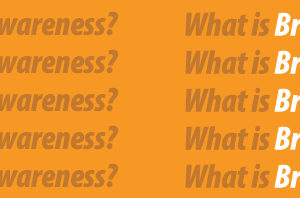
TikTok is a social media platform that is a variety of short-form user videos, from genres like pranks, stunts, tricks, jokes, dance, and entertainment with durations from 15 seconds to 3 minutes. Video is only getting popular in the marketing world, and the key to video marketing is short video.
With TikTok being in the top 10 Social Media Platforms in 2022, it only makes sense that they are grabbing more ad dollars.
As reported by Wall Street Journal on June 21st, 2022 by Suzanne Vranica and Liza Lin.
TikTok Grabs More Ad Dollars, as Marketers Look at Attract Gen Z and Millennials
Snack-bar maker Kind earlier this year enlisted the help of geo-targeted TikTok ads and TikTok influencers to help it attract consumers to a pop-up farmers market hidden behind a faux vending machine in New York City.
The Mars Inc.-owned brand credits the social-media app for a surge in attendance: Roughly 8,000 people showed up—a far cry from the 500 who attended a similar New York event Kind hosted in 2019, which the company promoted using Meta Platforms Inc.’s Instagram.
It “proved to us the power of engaging the TikTok community,” says Rachel Workstel, Kind’s manager of social media.
With its more than one billion monthly active users, the wildly popular video-sharing app from Chinese parent company ByteDance Ltd. has emerged as a darling of Madison Avenue, impressing big and small brands with the virality of the platform and its strong hold over Gen Z, millennials and influencers.
“If you want to reach Gen Z consumers, it’s got to be part of your portfolio,” says Chris Brandt, chief marketing officer of Chipotle Mexican Grill Inc. The chain says it has doubled its spending on TikTok each of the past three years.
TikTok is projected to generate as much as $12 billion in advertising revenue this year, triple the amount seen in 2021, people familiar with its business operations say. TikTok’s total would be three times the ad revenue of Snapchat though still a fraction of Meta, the parent of Facebook and Instagram. A TikTok spokeswoman says the company is unable to share revenue projections.
Separately, Insider Intelligence expects TikTok’s parent company, Bytedance, which runs other popular social-media apps in China, to see a roughly 50% jump in ad revenue this year.
TikTok, which is just five years old, has “graduated from an emerging ad platform to an established ad platform,” says Doug Rozen, chief executive of Americas at ad buyer Dentsu Media.
This week, TikTok will ramp up its charm offensive with big brands at the Cannes Lions ad festival. It will go head-to-head with other media and tech companies such as Amazon.com Inc., Meta and Walt Disney Co.—all of which will be seeking to schmooze conference attendees such as Procter & Gamble Co., Volkswagen AG and Coca-Cola Co.
TikTok’s explosive growth has come partly at the expense of big tech players such as Meta and Google, which are currently giving priority to their TikTok-like short-form video products, Reels and Shorts, respectively.
To be sure, Google said that more than 1.5 billion people watch YouTube Shorts every month, which indicates the short-video service had reached a comparable scale to TikTok after launching less than two years ago. It also recently began rolling out ads globally on YouTube Shorts.
Meta said on its most recent earnings call with analysts that Reels is growing quickly and the company is pleased with the efforts it’s making to grow the product.
Apple Inc. last year introduced changes in the mobile ad-tracking features on its devices, making it harder for advertisers to target consumers and measure their ads’ effectiveness. This caused many small and midsize companies and e-commerce players to diversify their spending across a larger swath of players, including TikTok, ad buyers say.
Diana DiGuido, chief client officer at Tinuiti, a digital agency that works with midsize packaged-goods and e-commerce companies, says some clients have shifted money from Facebook and Instagram to TikTok and other places as a result of Apple’s changes. Tinuiti is expected to spend $30 million to $60 million on TikTok this year, up significantly from what it spent last year, Ms. DiGuido says.
TikTok is also affected to some degree by the privacy changes adopted by Apple, but the fallout for it hasn’t been as harsh because its app is still too new for brands to have clear performance benchmarks for it, which they do have for Facebook given its longer record. It is also likely that TikTok is less hampered by Apple’s changes because TikTok caters to a category of advertisers that have been less affected, analysts and ad buyers say.
Despite all this, the digital ad business remains dominated by Google and Meta, which combined are expected to account for about 50% of world-wide digital ad revenues this year, according to Insider Intelligence. TikTok, meanwhile, is projected to have 1.9% of the market.
TikTok is looking to attract more small and midsize companies, which are critical for Meta’s success. Last year, TikTok launched partnerships with e-commerce platforms such as Shopify Inc. to help businesses advertise directly through their Shopify dashboards.
Steve Netzley, chief executive of Havas Edge, an agency that works with small and midsize e-commerce and consumer-goods businesses, says some of its clients have shifted money to TikTok because—although pricing can vary depending on the ad product and targeting—the cost of reaching 1,000 people on the app can be about half of what it would be on Instagram and YouTube.
Other TikTok features are getting quite pricey, marketers and ad buyers say. Hashtag Challenge, which combines a catchy hashtag with a video that shows a dance or some feat and challenges others to copy it, cost about $500,000 per challenge late last year compared with about $180,000 two years earlier, according to Emily Ivankovich, senior lead media planner at marketing agency Byte Dept.
TikTok isn’t able to target consumers with the same granularity that Facebook and Google offer, ad buyers say. Earlier this year, TikTok enhanced its ability to target and measure its ads by enabling first- and third-party cookies on top of its existing tools. It has also been ramping up data collection, including adding prompts in the app that encourage users to add personal information to their profiles such as a phone number, if they signed up using an email, according to a former TikTok sales employee. A TikTok spokesperson says the company is building new capabilities to improve the user experience and help businesses grow, and is committed to transparency about the way data is collected and used.
While TikTok has been very successful at attracting younger audiences—a big draw for youth-obsessed advertisers—some brands say the platform is making progress on bringing in more older consumers, which has helped brands get the scale they need to reach more of their customers. More than half of TikTok’s users are under 25, according to former TikTok employees who have seen internal documents. The company declines to publicly share its audience demographics.
Avocados From Mexico, whose customers are typically women 25 to 55 years old, says it held off from jumping deep into TikTok ads for a while because the audience skewed so young. The nonprofit marketing organization says that is no longer the case, prompting it—also thanks to improved ad measurement—to increase its spending with the app.
At the same time, some advertisers are concerned about TikTok’s potentially harmful effect on children. A Wall Street Journal investigation last year found that TikTok’s algorithms can drive minors to videos about sex, drugs, depression and eating disorders, and a coalition of state attorneys general has launched an investigation into the company.
“The safety of our community is our top priority, and that’s especially true for our younger users,” a TikTok spokeswoman says.
Omnicom Media Group, an ad-buying unit of ad giant Omnicom Group Inc., has asked tech companies including TikTok to allow creators to restrict minors from seeing their content. It also wants the companies to make sure their algorithms consider a user’s age when it makes a content recommendation.
Omnicom says that TikTok is developing a feature called “Mature Themes,” which creators will be able to toggle on when they want to make content visible only to adults. A TikTok spokeswoman declines to comment on Omnicom’s assertion but says the company is investing in new ways to recommend content based on age-appropriateness and exploring ways for families to use existing parental-control features.
If TikTok reaches 12 billion dollars in ad revenue this year, it will triple their ad revenue in just one year. If you are wondering if TikTok is the right app for your business, it is.




